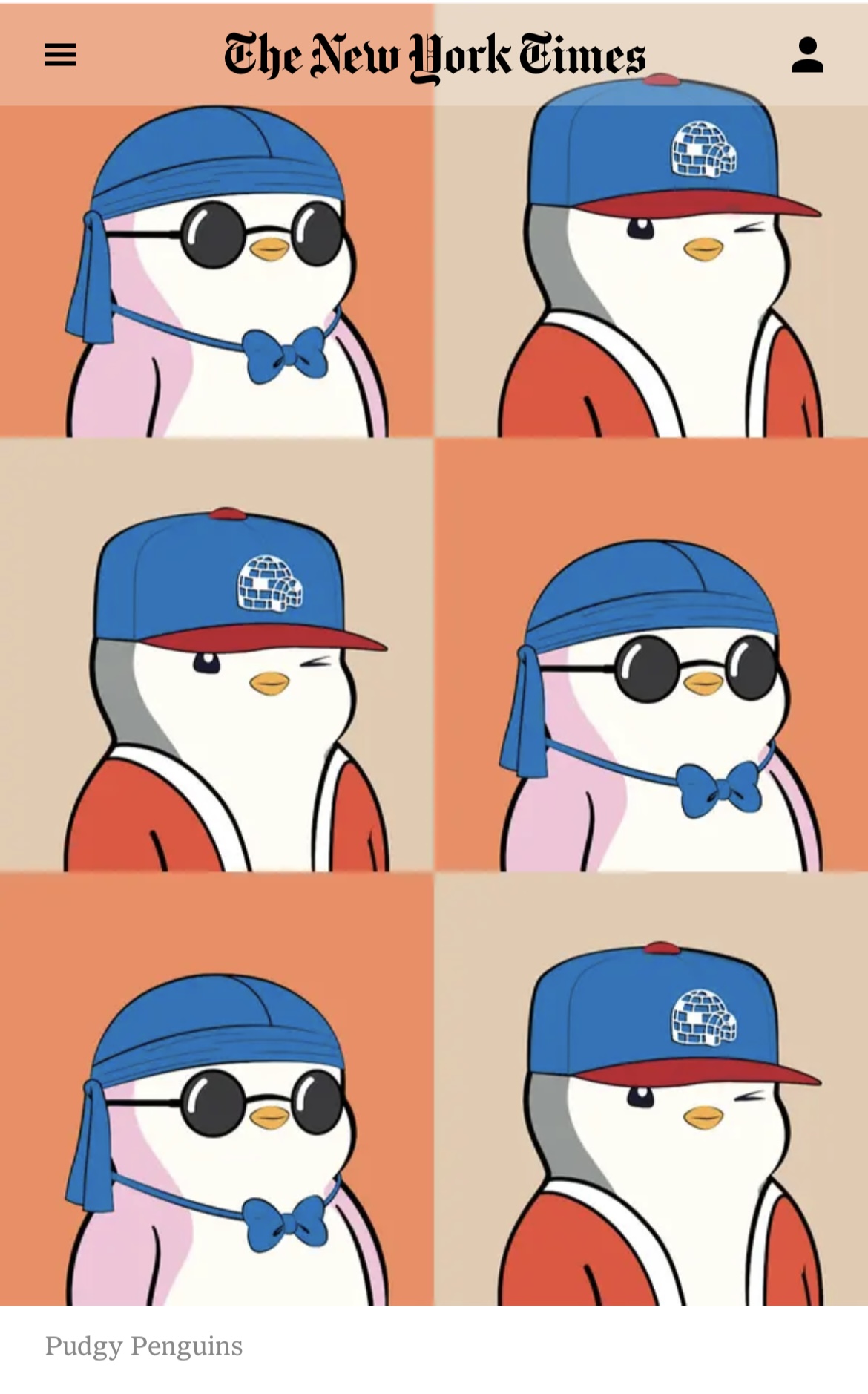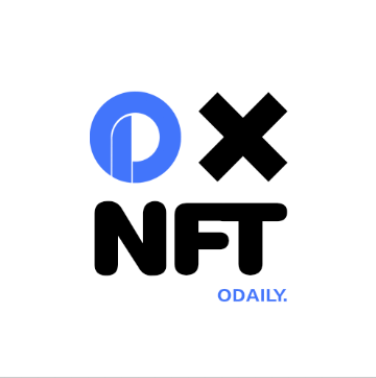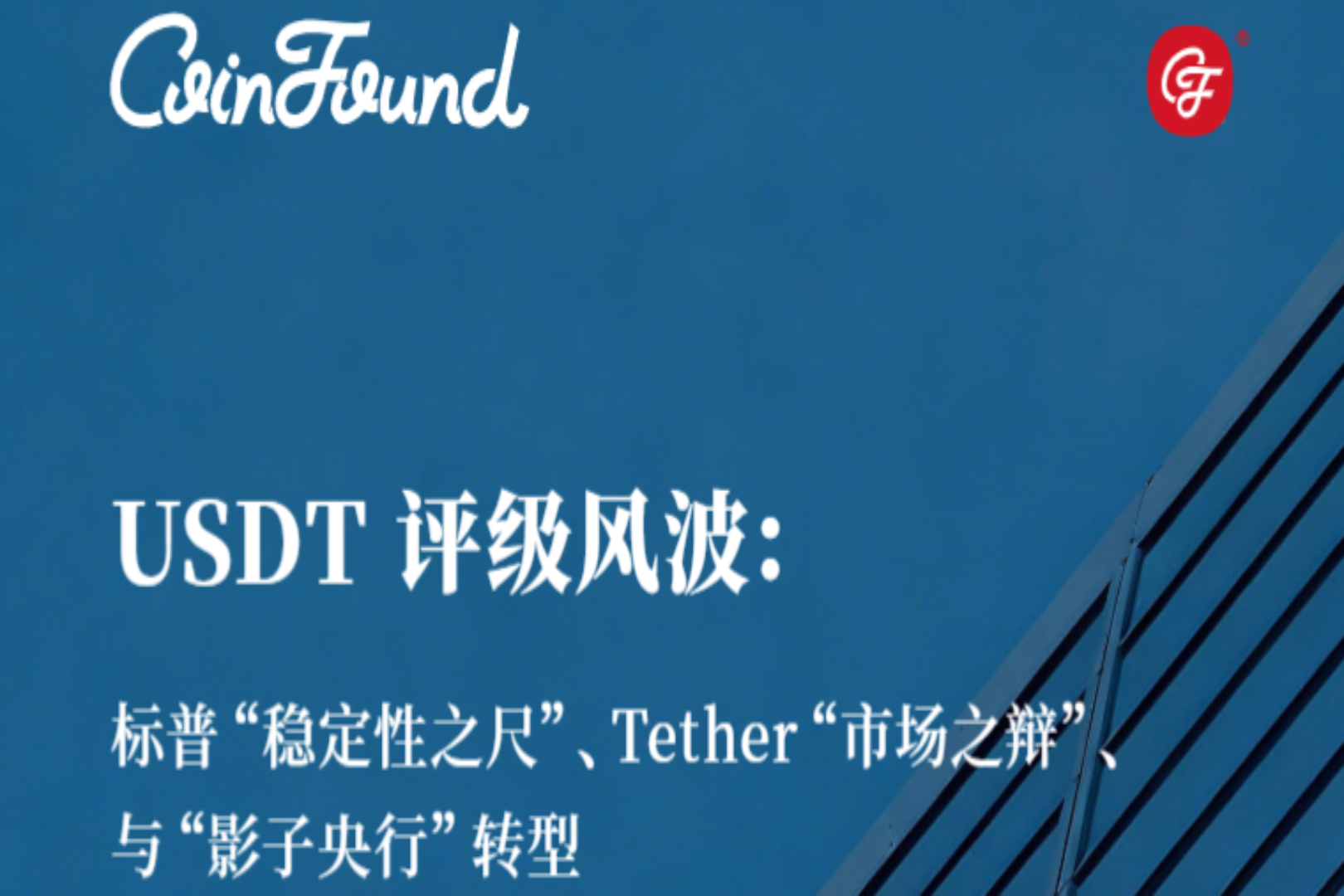New York Times reporter: I was 'attacked' by a penguin earlier this week
Original title: "I Joined a Penguin NFT Club Because Apparently That's What We Do Now"
By: Kevin Roose
Translation: Odaily | Different NFTs (partial deletion during translation)

New York Times reporter: I was 'attacked' by a penguin earlier this week
Of course, this does not refer to real penguins, but a project called Pudgy Penguins. They have a group of Twitter accounts with cartoon penguins as their avatars. They sent me invitations, and I saw words like "Welcome to Club Penguin" and "Enjoy the party" coming to my face. I see penguins with sunglasses and straw hats, penguins with bow ties and mohawks. Soon, dozens of penguins expanded to hundreds. I am surrounded by similar creatures, and everyone is congratulating me.
What did I do to make them welcome me so warmly? Just a few minutes ago, I bought a Pudgy Penguins, which marks my possession of one of the strangest new status symbols on the internet.
For months, crypto fans have been talking about “community NFTs,” digital collectibles that combine the get-rich-quick appeal of cryptocurrencies with the exclusivity of country club memberships.
If you know anything about NFT, you probably know that this is a unique digital token based on the Ethereum blockchain, such as a highlight video of the NBA or a piece of digital art. Some high-value NFTs attract buyers for the same reason as Renaissance paintings: limited worldwide, only this one.
In contrast, community NFTs are group projects. They typically post a unique but thematically related set of images that can be purchased and sold individually. Purchasing this kind of community NFT usually entitles you to certain powers. For example: becoming a member of a shared Discord server, or accessing a private Telegram channel and interacting with everyone. (The biggest bonus, though, is swapping your Twitter profile photo for an NFT so others know you're part of the community, too.)
I decided to join the Pudgy Penguins community because it's August and I'm bored and want to explore a bit more. Technologists have been predicting the rise of the "Metaverse" for years. This is an all-encompassing digital world that will eventually have its own identity, community, and form of governance. Facebook CEO Mark Zuckerberg recently said that Facebook will pivot to become a "metaverse company." Epic Games, the developer of Fortnite, is also betting big on the Metaverse, raising $1 billion to build its own version of digital reality.
Fans of the Metaverse believe that people's digital identities will eventually become as meaningful as their real-life selves. There, we also generate consumption accordingly. They predict that in the metaverse, we won't put artwork on the walls of our homes, but NFTs in our virtual Zoom backgrounds. No longer do we have to buy new clothes and instead splurge on high-end leather for our VR avatars.
Pudgy Penguins and similar NFT projects are betting on this digital future.
One of the founders of Pudgy Penguins, 23-year-old Clayton Patterson, said in an interview: "When I describe NFT to my family and friends, I will say that it is the same as people buying luxury goods in the real world. You can buy Supreme clothes or Buying a Rolex, you can have many ways to tell others that you are rich, but in fact these things can be faked in reality. But with NFT, you can’t fake it.”
Mr. Patterson (screen name: "mr tubby") is a computer science student at the University of Central Florida. This summer, he and three classmates started Pudgy Penguins after seeing other community NFTs pop up. They chose penguins as their theme because of their friendly-looking image. They decided to use an algorithm to generate 8,888 unique penguins with different combinations of clothing, facial expressions and accessories.
But at the same time, Mr. Patterson also said that Pudgy Penguins has huge MeMe potential, and they decided to let it develop naturally.
The first NFT project that unites a community is CryptoPunks, which was born in 2017 and consists of 10,000 pixel avatars. They have since become a luxury status symbol, with individual NFTs selling for millions of dollars, paving the way for other NFT communities to grow. Then came the Bored Ape Yacht Club, a project consisting of 10,000 cartoon ape-like heads that now sell for as much as $45,000 each.
Mr. Patterson and his co-founders hope that Pudgy Penguins will eventually join the pantheon of NFTs. According to data from the NFT sales data analysis website NFT Stats, Pudgy Penguins were all sold out within 20 minutes when they were released, and collections with a total value of more than 25 billion US dollars have changed hands. Earlier in the week, Pudgy Penguins were fetching thousands of dollars each, and those with rarer features of different background colors or gold medals fetched even more. For example: a different color background or a gold medal around the neck can make them sell more. The highest transaction price was Pudgy Penguin No. 6873, which was as high as $469,000.
I messaged Mr. Patterson on Tuesday asking if he had any suggestions for getting my own Pudgy Penguin without breaking the bank.
He replied to me: "Okay, wait a minute, I'll help you".
So, within a few minutes, Pudgy Penguins No. 3166 and No. 5763 appeared in my encrypted wallet. One of the penguins is wearing a straw hat and sunglasses, while the other is wearing a jacket and baseball cap with an igloo print on it. Mr Patterson said thank you for my willingness to know and be part of the community, it was a gift to me.
I then joined the Pudgy Penguin Discord channel, where I was greeted by a group of "penguin people" who were delighted to see me on board, especially since they thought "Penguin Head" getting attention from the New York Times would improve their own value. (After I received those two image files, I received offers of up to thousands of dollars.) The creative team at Pudgy Penguins gets a royalty for every penguin sold, but the other owners only pay more than The price they pay can only be resold for a profit.
Like other crypto communities, the hosts of Pudgy Penguin have developed their own language and customs. Penguins are called "pengus" and their owners are called "huddlers". "Tufts" refer to rare, valuable penguins that don't wear hats, while "Floor" refers to those less expensive, more common varieties.
Several Pudgy Penguin owners have told me that while they expect the penguin price to increase in order to turn a profit, they mostly see this as an opportunity to socialize. Pudgy Penguins has over 4,000 holders, and its Discord channel (joinable without penguins) is an active community. There people will discuss meme culture about penguins, celebrate every new deal, and work together to find ways to get more crypto celebrities into the club. (Alexis Ohanian, one of the founders of Reddit, took to Twitter on Tuesday to show off his new Pudgy Penguin purchase, bringing the community wider attention.)
"The people in the community are very nice, and everyone is chatting about the penguins with energy," said Christopher Aumuller, a 29-year-old Pudgy Penguins holder from Queens.
Cryptocurrency entrepreneur and investor Tiffany Zhong said: "Part of the appeal of Pudgy Penguin is that other popular NFTs have become too expensive, and ordinary consumers can no longer afford those items. Therefore, everyone who is trying to enter the NFT space They are all constantly looking for the next project that can explode.”
To outsiders, the Pudgy Penguins may seem pointless from some angles. It is true, but I will not belittle them because of the same reason that I don't care much about the big V on Twitter and Instagram. In my opinion, humans are status animals, so they are always looking for different ways to improve their status. The first iteration of the Internet tended to differentiate status, or at least make it difficult to determine people's identities, as the old saying goes: "no one surfs the Internet and knows whether you are a human or a dog". But the emergence of more innovative technologies (such as NFT) began to try to make people's social status more clearly reflected.
Packy McCormick, author of the Not Boring blog, mentioned in one of his articles that NFT communities are like a social network because they allow people to gain social status and get in touch with other people, in addition to being potentially profitable investment opportunities.
Mr. McCormick wrote: "When you combine money, status and community, there is a powerful force".
Indeed, if the craze passes, people who buy Pudgy Penguins or other community NFTs could end up losing a lot of money. But it's true, as Reddit users gleefully push up prices on GameStop and AMC, fans of these projects don't seem to mind the risks.
While I personally wouldn't invest my retirement funds in Pudgy Penguins, I've found the most common objections to be a little weak.
Are NFTs harmful to the environment? That is indeed harmful. Running the Ethereum blockchain requires a lot of computing power and energy, and NFT transactions will definitely increase the network's carbon emissions. But they are a tiny fraction compared to the entire crypto market, and their environmental impact is a drop in the bucket compared to the hundreds of thousands of regular bitcoin and ethereum transactions that take place every day.
Are they playthings of the rich, a waste of money that could be better spent? Of course, but the meaning is almost equal to buying supercars and luxury bags.
Is it appropriate for people to buy and sell blockchain collectibles at many multiples of the U.S. median annual income? Maybe, but at least they didn't hurt anyone. (Put it this way, in my opinion, one of the most innocuous things a group of young, mostly male internet geeks do in their spare time is trade cartoon pictures of penguins.)
The worst that one can think of about these community NFTs is that they are encouraging people to pay exorbitant fees for virtual collectibles, and when the bubble bursts, there may be countless people falling out of their heads.
I spoke to Ms. Zhong, a cryptocurrency entrepreneur, that I am still confused by the appeal of Pudgy Penguins, and I still think it seems to serve no purpose other than to attract attention.
She responded to me by saying, “Nobody really knows. No one really knows what’s going on, but it’s just hilarious that there are such interesting deals going on.”



